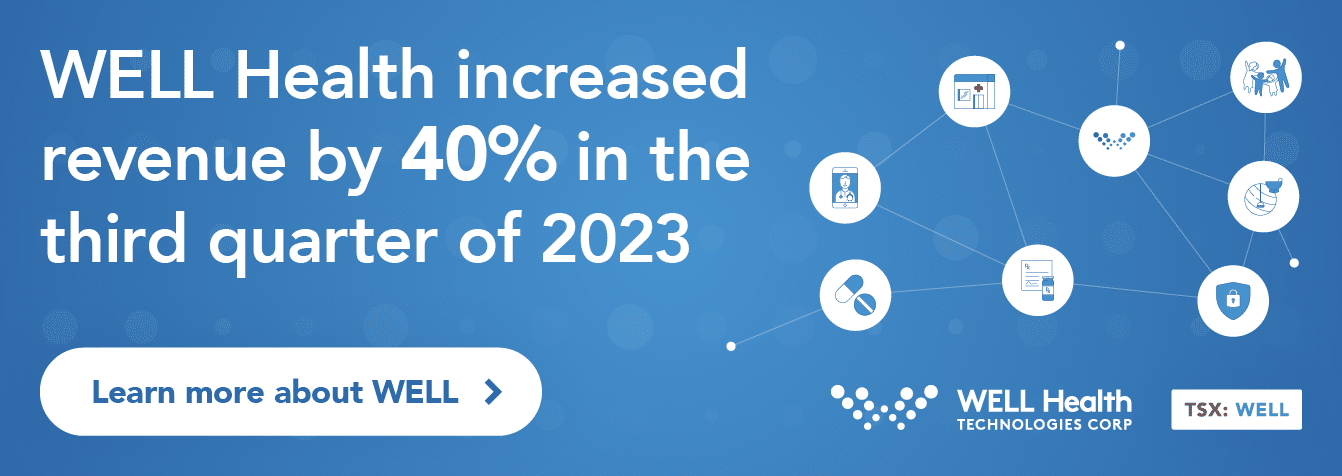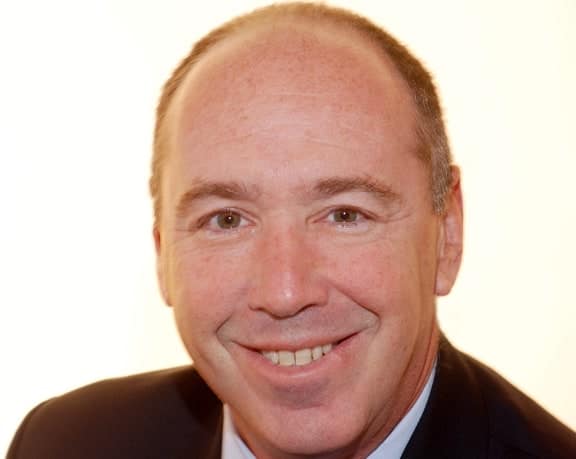The soundtrack is bouncy.
The commercial jump-cuts across close ups of a model’s eye, finally focusing on actress Brooke Shields, who declares she is using Latisse, “the first and only FDA approved prescription treatment for inadequate or not enough lashes”.
The ad then settles into various scenes of upper-middle class frolic, including Shields and another man dancing, and a woman blowing out candles on a birthday cake. Meanwhile, the list of the possible side-effects of the treatment are read in a soothing narration.
What is with these commercials? If you notice more and more of them, there’s a reason. Big pharma is scrambling to replace revenue lost from lost patent protection on heavyweight drugs that have carried the mail for years. This past summer, Pfizer reported a 79% drop in revenue from cholesterol drug Lipitor, which it lost exclusivity on in November of last year.
Vancouver-based Bioasis (TSXV:BTI) thinks it may have a better solution for them than eyelash hysteria. The company’s Transcend, a carrier for delivery of therapeutic agents across the Blood-Brain Barrier, may be a significant breakthrough in the treatment of a number of neurological diseases because, until now, the physical barrier has prevented potentially effective treatments from reaching the brain. What’s more, Bioasis may allow big pharma to extend the patent life on lucrative drugs. Cantech Letter’s Nick Waddell had lunch with Bioasis CEO Rob Hutchison recently to talk about the company.
Rob, how did Bioasis get its start?
It started at the University of British Columbia, developed by a Dr. Wilfred Jefferies, a noted immunologist and biochemist. What he found was that there was a protein in our blood, hopefully in low level quantities, not high, because he and others have shown a correlation between high levels of this protein and Alzheimer’s. What he found was that this protein had the unique capability of traversing the blood/brain barrier. This is the biggest problem in treating neurological diseases and disorders, which is how to get therapeutic compounds into the brain. Typically the blood brain barrier blocks them all. If you have cancer in the brain and it is inoperable, there is a high probability you are going to die; it’s as simple as that. So Wilf said, if this protein has the ability to cross the blood brain barrier can I link something to it like a chemical or a therapeutic and channel it to cross the blood brain barrier. He was successful at showing he could do that.
_____________
GUESS WHO?

This Vancouver-based company has developed patented technology that has caught the eye of food giants such as Kellogg, Hormel and Sun Maid. This Cantech sponsor is now entering full commercialization. Click here to find out who this is….
______________
The company is based on this delivery mechanism, that’s the core technology?
The core technology is the protein and covalently or chemically linking it to a compound you want to target to get into the brain.
Do you own that technology?
Yes, I think we now have fourteen active patents and another nine that are in provisional form. My background is IP, that’s where I came from. I saw this technology out at UBC in 2006, and coming from a medical family, I immediately took it to my father and he suggested talking to a bunch of neurologists and medical specialists and first of all, find out if it really works. There are a lot of things done in a university you can’t duplicate in a commercial setting. Hutchison: “When we took this to neurologists they all came back and said, first of all, no one has ever done this before and we doubt whether you can. Second, they said if we could, it is the Holy Grail of neuroscience; because we have patients dying because drugs we know can help them do not reach the brain.”
What did they say?
They all came back and said, first of all, no one has ever done this before and we doubt whether you can. Second they said if we could, it is the Holy Grail of neuroscience; because we have patients dying because drugs we know can help them do not reach the brain.
So how did you proceed?
Taking the advice of my father’s colleagues, I approached the university and told them I was interested in acquiring the technology and I wanted to make them a partner, a shareholder in the company from day one. They agreed to this and I ended up purchasing all the intellectual property and putting it into a private company. We then took that and rolled it into a public company in March, 2008. The next steps were very much a building block process. We had to figure out where we had to go to validate the technology. The National Research Council has a very good program. We used them to show that Dr. Jefferies observation of Blood Brain Barrier transport was correct. Then, in looking at transport of a therapeutic compound to the brain, we looked at brain cancer. Here we used BC Cancer to provide an assessment on whether the technology was viable after the conjugation of our Transcend protein vector to a cancer therapeutic. We needed to know if we linked our vector/protein to a cancer therapeutic (drug), let’s says Herceptin (which is a chemotherapeutic), did the linking process reduce the effectiveness of thetherapeutic compound, in this case Herceptin. So we did this process with BC Cancer and found that not only was it effective, it was 3-times more effective in killing HER2+ breast cancer cells.
What was the next part of the business plan?
The next part was to look at all the potential therapeutics that were out there that could have a benefit if they could get to the brain. Then, after a long look we figured out which drugs would have the highest sales value. We then looked at the patentability, looking to see if we could get a patent linking a drug around our process. We were looking to create what is termed a new chemical entity, essentially a new drug from an old already approved drug.
So this extends the life of existing patents?
It does. For example, Herceptin – Roche right now gets around $6 billion a year in revenue from that drug. When it comes off patent and you get what they call biosimilars or generics enter the market, they lose about two-thirds of their annual revenue on that drug. So they may go from about $6 billion to $2 billion annually. So if we can extend their Herceptin patent runway for them for another twenty years, therein lies the incredible value.
This must be a very exciting proposition for Roche…
It is for them and others. Over the next five years drug companies are going to be losing hundreds and hundreds of billions in revenues because the patent life cycle of their therapeutic compounds. This is one of the biggest problems for big pharma; maintaining their drug pipelines. Hutchison: “”Roche right now gets around $6 billion a year in revenue from Herceptin. When it comes off patent and you get what they call biosimilars or generics enter the market, they lose about two-thirds of their annual revenue on that drug. So they may go from about $6 billion to $2 billion annually. So if we can extend their Herceptin patent runway for them for another twenty years, therein lies the incredible value.”
Can you tell us a bit about the results from an animal study you did recently with Herceptin?
Sure, as I mentioned earlier, we wanted to show that we could get a large therapeutic compound across the Blood Brain Barrier. Others before us have shown that they could deliver small therapeutic compounds across the BBB, but we were confident that we could deliver large biologic therapeutic compounds – yet to be shown by others. This lead us to looking at Herceptin. A large therapeutic compound that is very effective in treating a form of breast cancer that in 30% of the cases metastasizes or ends migrating to the brain. Since Herceptin does not enter the brain tissue on its own, those patients whom end up developing brain metastasis have very, very limited treatment options. So our first test in animals was to see if we could deliver Herceptin to the brain – NRC showed we could. Next we needed to know if the new drug (Herceptin + our Protein Vector), which we call BT2111, was effective in treating the HER2+ breast cancer tumours –the Xenograft Model is used to show this and BRI Pharmaceuticals here in Vancouver are experts at this model – together we showed that BT2111 was effective – a huge step for us. Through all of this, we’ve been working with Dr. Quentin Smith of Texas Tech University a noted expert in the BBB and cancers. We’re now at the final stages of the pre-clinical work on BT2111 with Quentin, that being the Brain Metastases Tumor model. Positive results from this model will open the door to potentially taking this new drug, BT2111 into clinical trials.
What are some the major risks you will be facing?
I think competition might be a risk. Someone might come up with another vector. We certainly don’t see this happening, mind you. We sit on all the blood/brain barrier boards around the globe, we know all the top people and they are all saying they don’t know of any coming up. We still are unsure of what happens when the drug gets into the brain because no one has been able to do it before. Does it cause swelling? Will there be a reaction? We haven’t seen that, we have done all the studies and so nothing so far. I think we have pretty much derisked this, as far as we possibly can.
What do you hope to accomplish in the next 12-18 months?
We’ve had great success of late in enticing some major pharmaceutical company into collaborations with us, most notably Shire and Abbott Pharmaceuticals. Collaborations are the precursor to these companies looking at licensing our technology for their own use. Everyone wants to try it – to see if works for their compounds. The key signal for us is the fact that so many of them want to talk to us. Collaborations are no minor matter for large pharma, each time they enter into one, it means that other already planned scientific work has to be set aside to allow for the collaboration to take precedence, often at great cost. So I see Bioasis entering into many more collaborations – as well we are aggressively advancing a number of Herceptin like programs internally, showing further advancements of our technology. The next 12 months for Bioasis are going to be very exciting and I feel that it is going to be very exciting for our shareholders as well.
Related: Canada’s 10 Hottest Biotech Stocks
_________________________
Leave a Reply
You must be logged in to post a comment.







 Share
Share Tweet
Tweet Share
Share




Comment